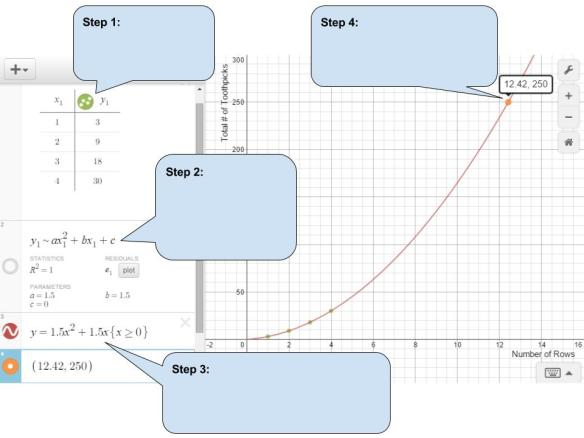I took the typical “find the largest area given a specific perimeter” problem and created a hands-on, problem-based learning task for my combined grade 9 Math class (academic & applied combined):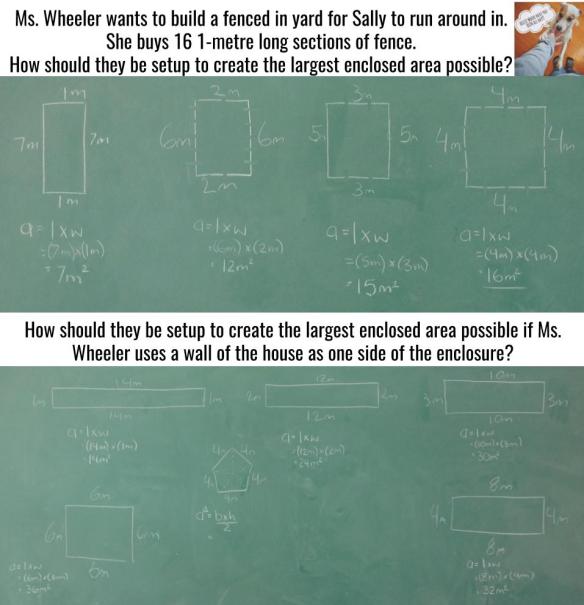
Scenario:

Ms. Wheeler wants to build a fenced in yard for Sally to run around in.
She buys 16 1-metre long sections of fence.
What do you wonder?
Physical & Visual Representations:
The yard must be fully enclosed. Use toothpicks to create show different ways of placing the 16 pieces of fencing (I forgot to take photos of this part but they made stuff like this):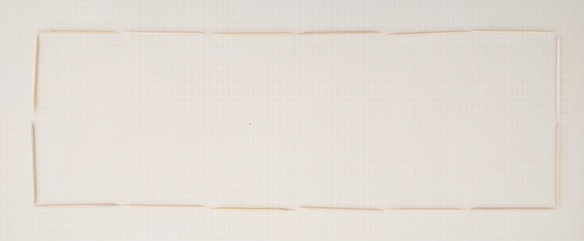
Draw your shape & label its dimensions:
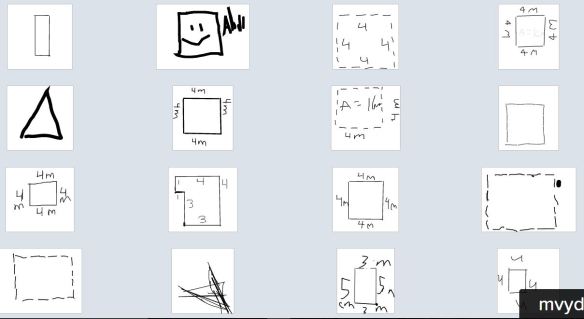
How should the pieces be set up to create the largest enclosed area possible?
What shape offers the largest area?
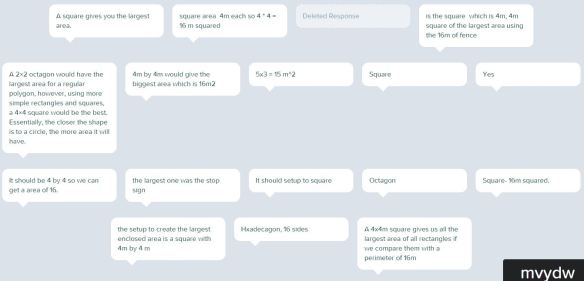
We discussed that while a square was the largest rectangle possible, there were other shapes possible with greater areas.
How should the pieces be set up to create the largest enclosed area possible if Ms. Wheeler uses a wall of the house as one side of the enclosure?
We have some more exploration to do here. I left this pretty open and they explored various shapes. But I’m not sure they’ve drawn any solid conclusions just yet for the case where we have 1 side of the shape already accounted for.
Get the Pear Deck slideshow here.
– Laura Wheeler (Teacher @ Ridgemont High School, OCDSB; Ottawa, ON)




















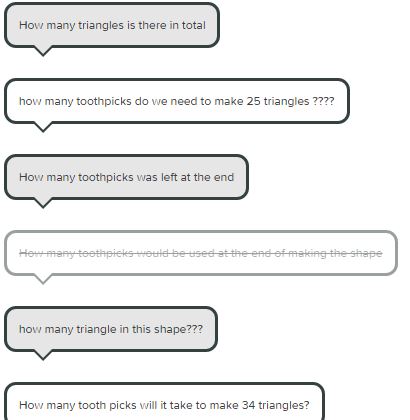




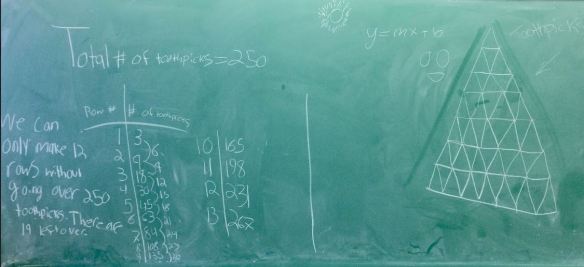 You can see that they all used a table of values with second differences to continue the pattern & find an answer.
You can see that they all used a table of values with second differences to continue the pattern & find an answer. 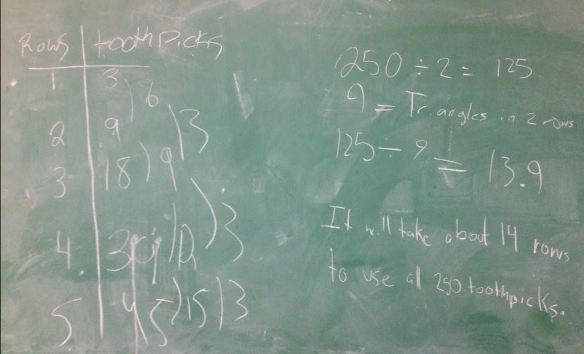
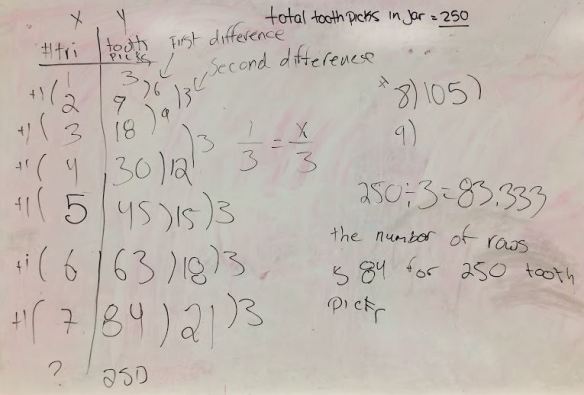 These 2 groups were trying to use some calculations but the top group could not explain to me their reason (within the context of the toothpick triangles) for dividing the total number of toothpicks by 2.
These 2 groups were trying to use some calculations but the top group could not explain to me their reason (within the context of the toothpick triangles) for dividing the total number of toothpicks by 2. The video version (which we watched) is
The video version (which we watched) is 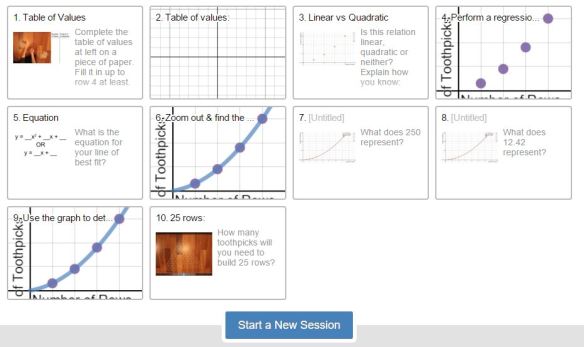 This was their homework after the toothpick task.
This was their homework after the toothpick task.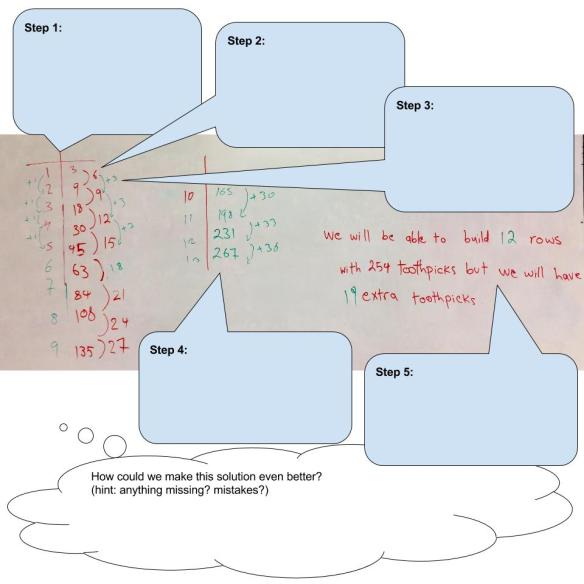 Desmos solution (which I created):
Desmos solution (which I created):